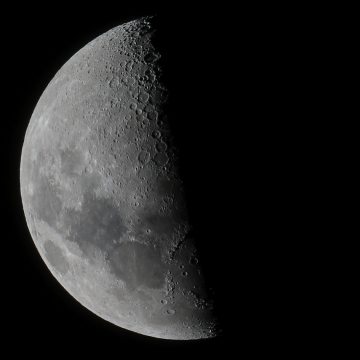The moon has been an essential guide for farmers and gardeners for centuries. Its influence on the planet's tides and natural rhythms also extends to agriculture. Depending on the lunar phases, certain days are more favorable for planting, pruning, harvesting and other agricultural activities. This article will explore the best days to grow crops in August 2025, based on the phases of the moon and how each phase can benefit different types of crops.
The Influence of the Moon on Agriculture.
The lunar cycle is divided into four main phases: new moon, waxing moon, full moon and waning moon. Each of these phases has specific characteristics that influence plant growth:
- New Moon: Ideal time to plant crops that grow below the ground, such as carrots and potatoes.
- Crescent: Best phase to plant crops that grow above the ground, such as tomatoes and lettuce.
- Full Moon: Good time for harvesting and pruning perennial plants.
- Waning Quarter: Ideal for maintenance and weeding tasks, as plant growth slows down.
Moon Phases in August 2025.
To determine the best days to grow crops in August 2025, it is crucial to know the exact dates of the moon phases for that month:
- New Moon: August 1 and August 30
- Crescent Quarter: August 7
- Full Moon: August 15
- Last Quarter: August 23
New Moon: August 1 and 30.
The new moon is a phase of renewal and new beginnings. It is the ideal time to plant root crops, such as carrots, beets and potatoes. These days are excellent for sowing seeds that need good establishment in the soil before the plant begins to grow upwards.
Recommended Activities:
- Planting Root Crops: Carrots, beets and radishes are perfect for planting during the new moon. These plants benefit from the gravitational force that the moon exerts on the earth, helping to develop strong root systems.
- Improve the Soil: It is a good time to add compost or manure to the soil, preparing the ground for successful planting.
- Garden Planning: Take the opportunity to plan the layout of your crops and prepare the planting beds.
Crescent Quarter: August 7.
The first quarter is a phase in which the moonlight gradually increases, promoting the vigorous growth of plants growing above the ground. This phase is ideal for sowing leafy vegetables, flowers and herbs.
Recommended Activities:
- Planting Leafy Vegetables: Lettuce, spinach and chard thrive when planted during the growing season. The ascending energy of this phase promotes rapid and healthy leaf growth.
- Planting Flowers and Herbs: Planting annual flowers and culinary herbs such as basil and cilantro can result in robust, aromatic plants.
- Watering and Fertilizing: The growing season is a good time to apply organic fertilizers and ensure plants receive enough water to support their growth.
Full Moon: August 15.
The full moon is a phase of plenitude and completion. During this phase, the plants reach their maximum development and are ready for harvest. It is also a good time for pruning and maintaining perennials.
Recommended Activities:
- Harvest: The full moon is ideal for harvesting fruits and vegetables. Crops harvested during this phase tend to be juicier and more flavorful.
- Pruning: Pruning trees and shrubs during the full moon helps promote healthy growth and maintain the desired plant shape.
- Seed Conservation: It is a good time to collect and store seeds for future planting.
Last Quarter: August 23.
The last quarter is a phase in which the moon's light decreases, slowing plant growth. This phase is ideal for performing maintenance and weeding tasks, as well as planting crops that require slow and steady growth.
Recommended Activities:
- Weeding and Maintenance: Take advantage of this phase to weed your garden and keep paths and edges clean.
- Plant Slow Growing Crops: Garlic, onions and carrots can benefit from being planted during the last quarter, as the moon's energy helps develop strong roots.
- Soil Preparation: It is a good time to prepare new growing areas for the next season by adding compost and other soil conditioners.
General Tips for Growing According to the Moon.
In addition to following the lunar phases, there are several additional tips that can help you maximize the yield of your crops:
- Watch the Weather: Although the moon phases are important, the weather also plays a crucial role in the success of your crops. Make sure you plant in appropriate conditions for each type of plant.
- Crop Rotation: Changing the location of your crops each year can help prevent diseases and pests.
- Using Compost: Improving soil with compost can provide the nutrients needed for healthy plant growth.
- Proper Watering: Make sure your plants receive the proper amount of water, adjusting according to the specific needs of each crop.
- Pest Control: Keep an eye on pests and use natural methods to control them, such as introducing beneficial insects or using traps.
Planning the cultivation of your plants according to the lunar phases can be an effective and satisfactory strategy. In August 2025, the key days to grow crops are August 1 and 30 (new moon), August 7 (waxing quarter), August 15 (full moon), and August 23 (waxing quarter). By following these recommendations and combining traditional knowledge with modern agricultural practices, you can optimize the yield of your crops and enjoy a bountiful, healthy harvest. Integrating lunar wisdom into gardening can not only improve food production, but also connect you to the natural rhythms of the earth, promoting greater harmony and sustainability in your farming practice.






